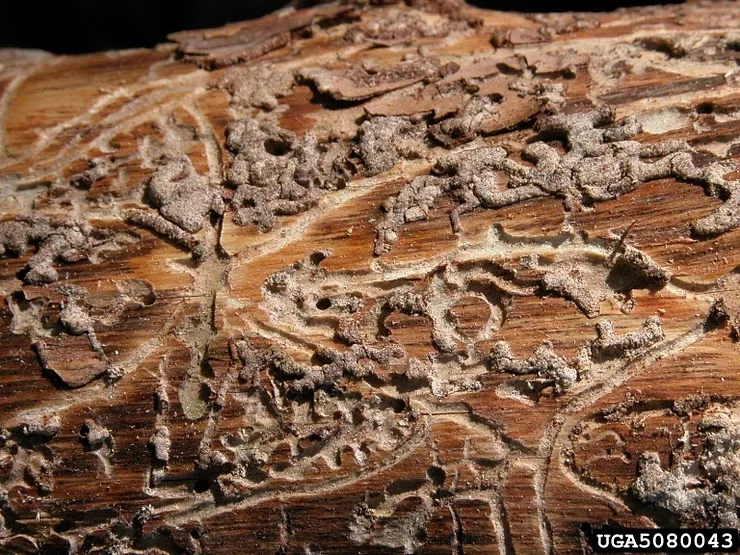
What is the Ips Engraver beetle?
The Ips engraver beetle, also known as the Ips beetle, is a type of bark beetle that belongs to the genus Ips. Their color varies, from auburn to black, as does their size, measuring 3-5 mm long. There are several species of Ips beetles, and they are known for their destructive behavior in forests. Some common species include: the six-spined Ips (Ips calligraphus), the eastern five-spined Ips (Ips grandicollis), and the small southern pine engraver (Ips avulsus). Ips beetles infest and bore into the inner bark of trees, causing damage, and sometimes killing the tree.
How does the Ips Engraver beetle affect trees?
Ips beetles typically target weakened or stressed trees, such as those affected by climate, disease, or injury. The female Ips beetle burrows into the bark and creates galleries where she lays her eggs. Once the eggs hatch, the larvae feed on the inner bark, disrupting the tree's ability to transport water and nutrients. According to the Mississippi Forestry Commission, new adults emerge after 21 to 40 days during the summer or after several months during the winter.
What trees are susceptible to the Ips Engraver beetle?
The Ips engraver beetle primarily targets pine trees, like in central Mississippi. It is important to note that while Ips beetles primarily infest pine trees, they can also infect other conifers such as spruce. The susceptibility of trees to Ips engraver beetles can be influenced by various factors such as tree species, tree health, and environmental conditions. For example, the Pine Engraver beetles, which include the Ips beetle, can infest fallen trees and logging slash. Also, trees which are already infected can still be prone to the beetle, even if the tree is not a pine. Different natural events, such as strong winds, heavy rain, or drought, can increase the chances of infestation from the beetle.
How do you know your tree is infested with the Ips Engraver beetle?
Pitch tubes and emergence holes are the most common signs of the beetle. Pitch tubes are small, resinous tubes or tubes filled with pitch that appear on the surface of the bark. While pitch tubes of the Ips engraver beetle are more commonly seen on bark plates, they can also be found in bark crevices. Emergence holes are small, circular holes (1 to 3 mm in diameter) left by the beetles when they emerge from the tree after completing their life cycle. However there are other signs, such as browning foliage and sawdust-like frass near the bark crevices.
How do I save my trees from the Ips Engraver beetle?
• Regularly inspect your trees for signs of infestation. Early detection can help prevent the spread of the beetles.
• Maintain the health of your trees through irrigation, fertilization, and pruning.
• Remove and dispose of infested trees, or branches, by chipping, burning, or debarking them to reduce the potential breeding sites for the beetles.
• In severe infestations or for high-value trees, insecticide treatments may be considered.
• If you have trees that are severely infested or beyond recovery, it may be necessary to remove them to prevent the spread of the beetles to nearby trees.
• Consider contacting a certified arborist for a consultation.
• To have trees removed contact A Cutting Edge Tree Service at (601) 470-6825.